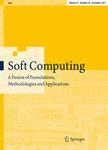版权所有:内蒙古大学图书馆 技术提供:维普资讯• 智图
内蒙古自治区呼和浩特市赛罕区大学西街235号 邮编: 010021

作者机构:Tokyo Metropolitan Univ Dept Syst Design Japan Sci & Technol Agcy PREST Tokyo 1920397 Japan Osaka Prefecture Univ Dept Comp Sci & Intelligent Syst Osaka 5998531 Japan Kobe Univ Grad Sch Dept Mech & Syst Engn Nada Ku Kobe Hyogo 6578501 Japan Nagoya Univ Grad Sch Dept Micro Syst Engn Chigusa Ku Nagoya Aichi 4648603 Japan
出 版 物:《SOFT COMPUTING》 (Soft Comput.)
年 卷 期:2006年第10卷第10期
页 面:891-901页
核心收录:
学科分类:08[工学] 0812[工学-计算机科学与技术(可授工学、理学学位)]
主 题:fuzzy modeling partner robot trajectory generation interactive genetic algorithm self-organizing map
摘 要:The purpose of this study is to develop partner robots that can obtain and accumulate human-friendly behaviors. To achieve this purpose, the entire architecture of the robot is designed, based on a concept of structured learning which emphasizes the importance of interactive learning of several modules through interaction with its environment. This paper deals with a trajectory planning method for generating hand-to-hand behaviors of a partner robot by using multiple fuzzy state-value functions, a self-organizing map, and an interactive genetic algorithm. A trajectory for the behavior is generated by an interactive genetic algorithm using human evaluation. In order to reduce human load, human evaluation is estimated by using the fuzzy state-value function. Furthermore, to cope with various situations, a self-organizing map is used for clustering a given task dependent on a human hand position. And then, a fuzzy state-value function is assigned to each output unit of the self-organizing map. The robot can easily obtain and accumulate human-friendly trajectories using a fuzzy state-value function and a knowledge database corresponding to the unit selected in the self-organizing map. Finally, multiple fuzzy state-value functions can estimate a human evaluation model for the hand-to-hand behaviors. Several experimental results show the effectiveness of the proposed method.